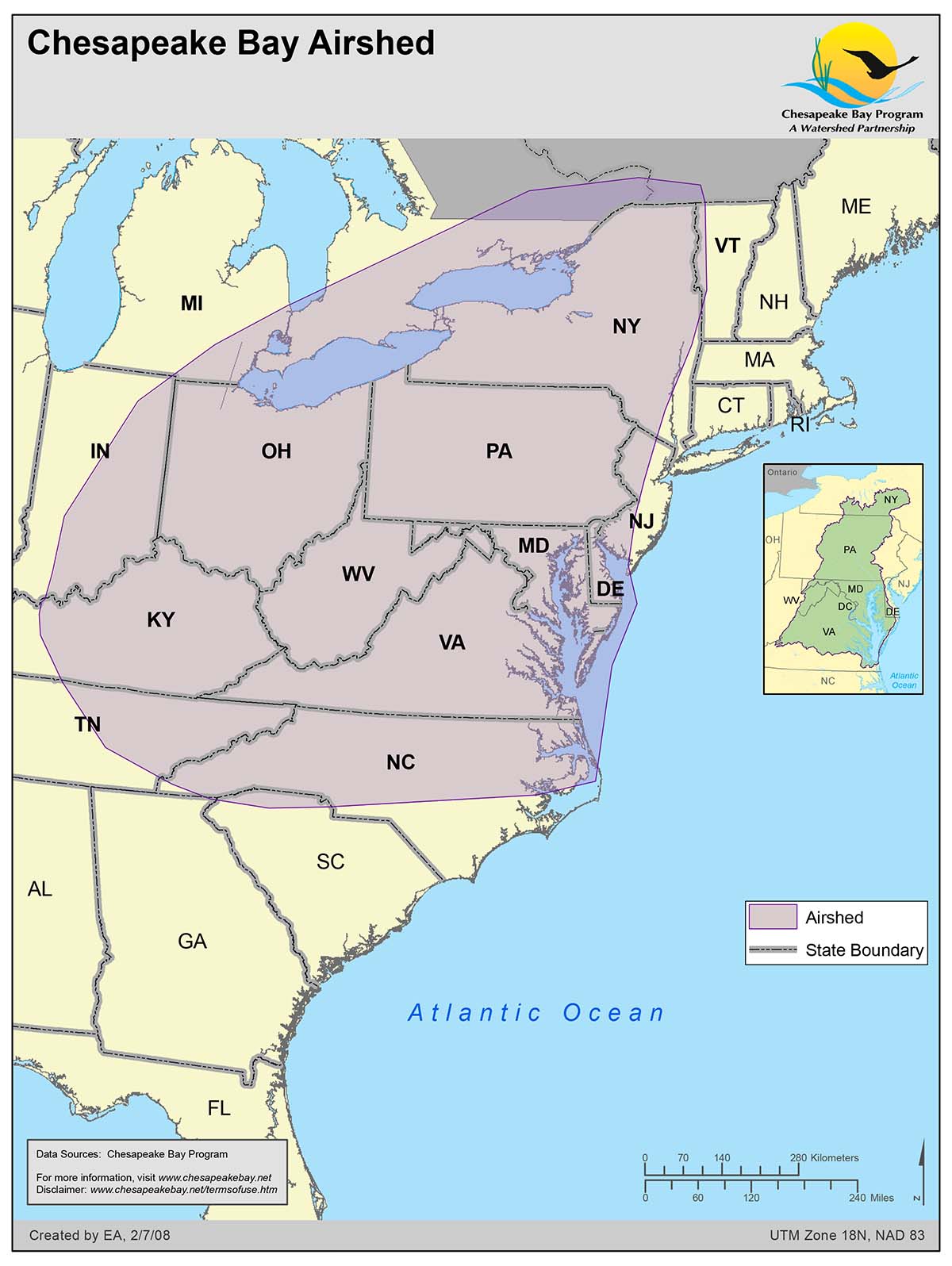By the Numbers: 570,000
The area, in square miles, encompassed by the Chesapeake Bay airshed

Many residents of the region know that pollutants in rivers like the James, Potomac and Susquehanna can end up in the Chesapeake Bay. In fact, the Chesapeake Bay watershed—or the area of land over which water flows into the nation’s largest estuary—stretches from Cooperstown, New York, to Norfolk, Virginia. Less well known is the fact that the Bay’s so-called “airshed” extends much farther: particles of air pollution emitted as far away as Cincinnati, Ohio, can reach the waters of the Bay.

At 570,000 square miles, the Bay’s airshed is nine times as large as its watershed. Because pollution emitted into the air can be carried over long distances by wind and weather, it should come as no surprise that emissions associated with hydraulic fracturing operations in Pennsylvania and West Virginia have been found in Baltimore, Maryland, and Washington, D.C., or that emissions from gas, coal and oil-powered machines in Tennessee or North Carolina can lead to algae blooms in the waters of Maryland and Virginia.
Scientists estimate that one-third of the total nitrogen that pollutes the Bay comes from the air, often in the form of nitrogen oxides generated by power plants or machines. Through a process known as atmospheric deposition, six to eight percent of this airborne nitrogen falls onto the water directly, sometimes as dry particles and sometimes attached to raindrops, snowflakes or sleet. The rest falls onto the land, where it soaks into groundwater or washes into rivers and streams. Once in the water, nitrogen can fuel the growth of harmful algae blooms that create low-oxygen dead zones that suffocate marine life.
But there is evidence that regulations meant to curb air pollution are having a positive impact on our air and our water. In 2014, for instance, researchers with the University of Maryland Center for Environmental Science traced a drop in the amount of nitrogen found in some Maryland, Pennsylvania and Virginia waterways to the Clean Air Act. In 2015, the U.S. Environmental Protection Agency declared the drop in the atmospheric deposition of nitrogen observed in the region over the past two decades can also be attributed to the Clean Air Act. And in 2016, our own water quality modeling experts confirmed we are still seeing benefits of the Clean Air Act emerge as estimates of the atmospheric deposition of nitrogen continue to fall.
This means efforts to curb air pollution across the nation have curbed water pollution in our watershed. In 1985, an estimated 52.2 million pounds of nitrogen fell directly onto the region’s waters. Thirty years later, this number has dropped to 17.88 million pounds, and data show that pollution-reducing practices put in place between 2009 and 2015 in an effort to meet the Bay’s “pollution diet” have reduced the atmospheric deposition of nitrogen 20 percent.
Continuing to reduce pollution in rivers, streams and the Bay is a critical part of our Chesapeake Bay Watershed Agreement. To learn how you can help, visit our How To’s and Tips page.

Comments
There are no comments.
Thank you!
Your comment has been received. Before it can be published, the comment will be reviewed by our team to ensure it adheres with our rules of engagement.
Back to recent stories